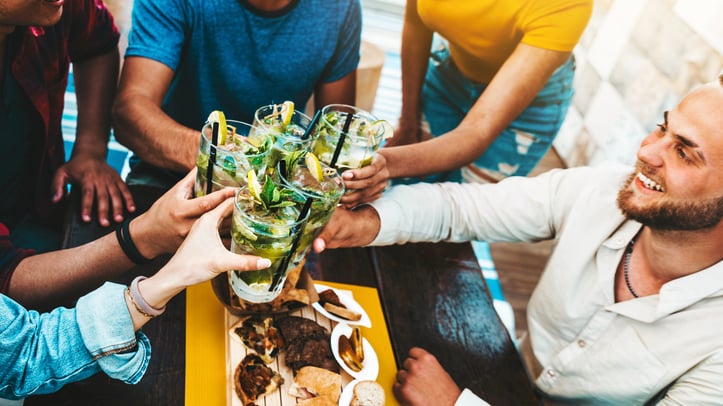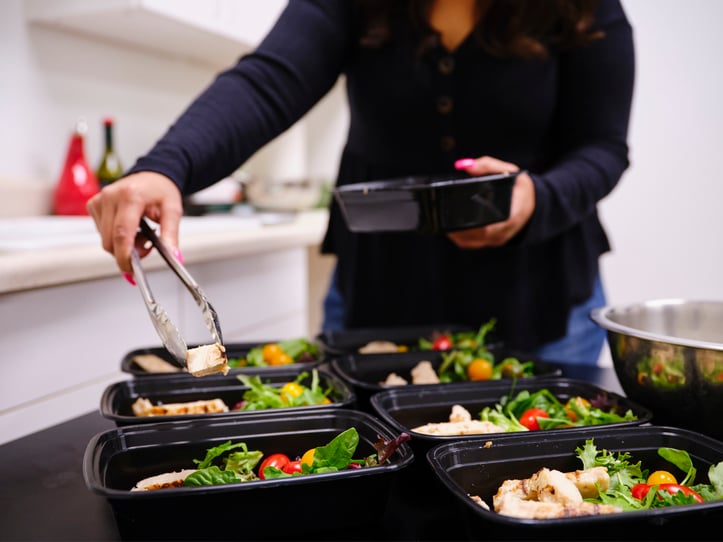“Why do I have no self-control with unhealthy foods?” is a common question a person might ask themselves after he or she makes the impulsive choice to eat junk food. This is especially true if there is an established goal related to eating healthier, losing weight, or avoiding certain foods due to medical reasons.
For example, if an individual has hypertension, they might get frustrated resisting the temptation to eat foods high in salt. In these situations, it can be hard to understand why self-control is difficult despite one’s best intentions and plans.
One reason why individuals eat unhealthy foods that are not part of a healthy dietary plan is due to food cravings. Food cravings are defined as an intense or urgent desire to eat a type of food. The type of foods that people crave is unique to the individual, but they are typically directed toward foods high in salt, sugar, and saturated fat.
Check out the NASM Nutrition Certification for more helpful tips like the ones below.
A brief Overview of Food Cravings
A food craving rarely pertains to the healthiest of foods such as kale or broccoli. Evolution holds the key to the reason behind cravings related to foods high in fat and sugar. Ever since humans came into being, eating foods rich in fat and sugar whenever available was key in fighting off starvation and extinction especially when food was scarce. Even though this might no longer be the case in today’s age, food cravings still exist thanks to evolution.
It is important to note that there is a distinct difference between physiological hunger and food cravings. Actual hunger is a biological urge in response to the body’s natural need for nourishment. Food cravings on the other hand often emerge to satisfy an emotional need, boredom, or exposure to an environmental cue or trigger.
So Why Do Food Cravings Happen?
From a neurobiological perspective, food cravings are related to the reward system in the brain. Although there are various parts of the brain associated with reward, the hypothalamus is one of the key players in this process.Although food cravings are a common experience, the intensity and frequency of food craving
s depend on the interplay of a variety of factors including but not limited to neurobiological, physical, emotional, and psychological.
Dopamine, which is a neurotransmitter in the hypothalamus, signals feeling good positive emotions associated with experiencing a reward. The expectation that one would experience positive feelings from the food they are about to consume stimulates higher dopamine activity.
Also, when a food craving is satisfied, dopamine-packed good feelings increase as well. The reward expected from the craving also increases the more frequently the same food is eaten over time. What this means is that when foods high in fat, sugar, or salt are eaten more frequently over time, the brain releases more feel-good chemicals that reinforce that craving.
These are the same chemicals that drive other addictive behavior such as gambling, smoking, and substance use. From a physical perspective, lack of sleep and poor hydration can all play a role in why food cravings emerge. Lastly, emotional factors such as higher levels of stress can also play a role.
6 Tips for Avoiding Unhealthy Food Cravings
Listed below are six ways to curb and better respond to food cravings:
- Balance Your Macronutrients
- Stay Hydrated
- Get 7-9 Hours of Sleep
- Take a Mindful Movement
- Change Your Environment
- Reduce Your Levels of Stress
1. Balance your macronutrients – It is important to balance your macronutrients to avoid food cravings. Not getting enough of the key macronutrients, for example, protein, can influence food cravings because the body thinks it is not getting an adequate supply of the nutrients it needs. Make sure to get enough protein, healthy fats, and complex carbohydrates instead. Doing so will ensure that you feel satisfied and full which can help minimize additional cravings.
2. Stay hydrated - Like not getting enough key macronutrients, not drinking enough water can also lead to increased food cravings. This is because dehydration interferes with the brain’s level of serotonin. Having low levels of serotonin can decrease satiety and increase the desire to eat foods high in sugar and salt such as carbohydrates. Work to get at least eight glasses of water a day or more if you are highly active or pregnant/ nursing.
3. Get 7-9 Hours of Sleep - Lack of sleep has an impact on our hormones ghrelin and leptin which pertain to appetite and hunger. Ghrelin is the hunger hormone and leptin is the hormone that helps us feel full and satisfied. When we do not get enough high-quality sleep, defined as approximately seven to nine hours of sleep per night, ghrelin increases causing us to eat more. At the same time, leptin decreases as well which results in one struggling to do portion control.
4. Take a Mindful Moment – It is important to take a moment to mindfully reflect on the food craving. Firstly, observe if what you are experiencing is true hunger or is a food craving. Secondly, take a moment to allow yourself to consider where the craving is coming from and self-evaluate if you want to choose to act on it. Diving into the source of the craving can prove helpful.
Was it triggered by the environment you were in or an advertisement on social media? Is it from a place of boredom or in response to an emotional situation or stressor? Self-awareness of these details might contribute to the craving subsiding or resulting in one choosing a healthier food option instead.
5. Change the Environment – Consider changing up your environment and shifting your attention to something else before acting on the food craving. This may help the craving to subside. Change up your environment by going for a walk or doing something you enjoy. If you still have the craving following these activities, the choice to indulge will be more of a conscious decision instead of an impulsive one. On this similar note, be mindful of environments and situations where you might be more likely to make poor nutritional choices. Consider minimizing exposure to these situations to reduce future cravings.
6. Reduce Levels of stress – Higher levels of stress can increase the amount and frequency of food cravings. The reason for this is due to the higher levels of the stress hormone cortisol. It is important to respond to stress adaptively and minimize allowing food cravings to become a maladaptive, or unhealthy, stress response. Healthy stress management can incorporate a wide array of activities.
If you are unable to minimize your food craving after attempting the strategies listed above, consider responding to the food craving but in moderation. One way to do this is to allow yourself a small portion of what you are craving. The most important thing to keep in mind with this approach is having the food item in moderation.
If you are going to take this approach, establish exactly what that means from a frequency standpoint (for example allowing yourself to satisfy a particular craving once a week) while ensuring one is mindful of the portion size as well. Taking this step will help to satisfy the craving and minimize the likelihood of binging on it profusely. It is important to give yourself permission to take this approach and move forward with your nutritional goals to minimize any feelings of guilt or regret.
Conclusion & More Tips
In addition to the tips and strategies listed above, it can be helpful to incorporate healthy alternatives to junk food cravings and minimize the fat and sugar content in snacks and foods prepared at home. If you are craving something salty like chips and/or salted peanuts, consider air-popped popcorn or raw nuts instead. If you are craving something sweet like cake and cookies, consider eating fresh or dried fruit. If you are craving ice cream or a milkshake, consider yogurt instead.
If you are craving pizza, consider making yourself a whole grain pita pizza at home instead of one made with dough. If you are craving soda or another sugary drink, consider flavored water instead. As these examples show, there are a variety of ways to respond to food cravings with a healthy alternative that still meets what you are looking for.
The most important thing to remember is that you are in the driver's seat and can make a conscious choice on the approach you take when responding to the urge for specific types of food.
















